Warren Feeney – 3 July, 2015
Enter the gallery and follow the systematic thinning of acrylic paint from one panel to the next - to the point where the wall itself forms the subject of this work, shifting attention from Morris' painting to the gallery space itself and back again to the painting. It represents a circular, uninterrupted and intimate relationship between artwork, gallery space and viewer beyond the kinds of agendas that informed Judd and his contemporaries' work in the 1960s.
There is an account by Colin McCahon of his 12 metre-long canvases for Walk (1973) that could be describing Simon Morris‘ Black Water Colour Painting 2015 at the Ilam Campus Gallery. McCahon said of his work: “I hoped to throw people into an involvement with the raw land, and also with raw painting. People should know perhaps that I don’t regard these canvases as ‘paintings’, they shouldn’t be enclosed in frames, they are just bits of a place I love.”
As a large-scaled wall painting in acrylic that wraps itself around the four walls of the Ilam Campus Gallery, Black Water Colour Painting 2015 is also a work that throws people into an involvement with painting, and reveals that Morris is thinking about bits of the places that he loves as well.
Black Water Colour Painting 2015 is an immersive experience about the act of painting. As though Morris wished to offer a sense of the pleasures of making a work of art - being in the middle of it all - the experience of manipulating materials, measuring and addressing the reach and breadth of the gallery’s spaces, and creating the illusion of space resonating from the gallery walls. While McCahon may have been in love with Muriwai Beach, Morris’ passion is abstract painting in its most reductive and essential form. If Black Water Colour Painting 2015 is intended to make tangible the pleasures of such an experience, it is certainly evident in the immersive nature of the work and the quality of its detail. Minimalist painting has never been so user-friendly or intimate.
While there is an order and geometry to the modulation of Morris‘ 153 vertical painted bands on the gallery wall, it is the evidence of the artist’s hand, moving paint over its surfaces and revealing unexpected marks, highlighted by Morris’ paint, that are equally central to the success of this work.
Outwardly, associations between Black Water Colour Painting 2015 and Barnett Newman, Sol LeWitt or Ad Reinhardt might appear to make perfect sense. Yet Morris‘ works seems as disconnected as it is connected to the work of such artists. Donald Judd also seems a suitable comparison - a shared commitment to a simplicity of form and the insistent presence of the physicality of the artwork, cultivating the viewer’s response. However, Black Water Colour Painting 2015 is as much about an animation of spatial relationships and our response, as it is about its painterly surfaces and tonalities. Enter the gallery and follow the systematic thinning of acrylic paint from one panel to the next - to the point where the wall itself forms the subject of this work, shifting attention from Morris’ painting to the gallery space itself and back again to the painting. It represents a circular, uninterrupted and intimate relationship between artwork, gallery space and viewer beyond the kinds of agendas that informed Judd and his contemporaries’ work in the 1960s.
Accompanying Black Water Colour Painting 2015 is a catalogue essay by Senior Lecturer at Whiti o Rehau School of Art, Martin Patrick, whose pleasure in this artist’s work is clearly evident. Patrick observes that Black Water Colour Painting 2015‘s ‘utter richness as a painting took me a bit by surprise.’ He also brings a clarity and insight to his commentary that could only have come from a thorough knowledge and experience of Morris’ work. Patrick’s essay complements a well-considered and unanticipated work by Morris that also insists his practice is more than worth a second look.
Warren Feeney
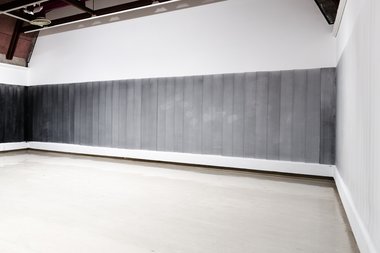
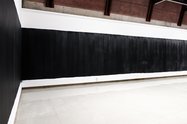
 Two Rooms presents a program of residencies and projects
Two Rooms presents a program of residencies and projects Advertising in this column
Advertising in this column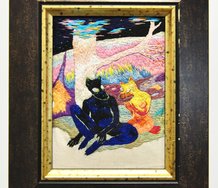
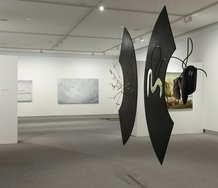
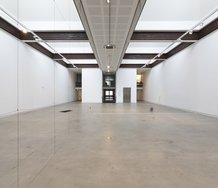

This Discussion has 0 comments.
Comment
Participate
Register to Participate.
Sign in
Sign in to an existing account.